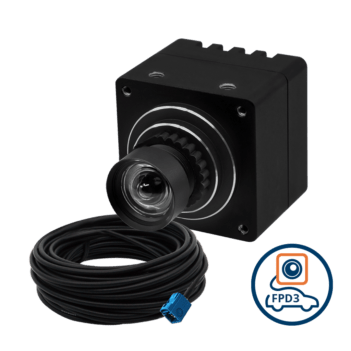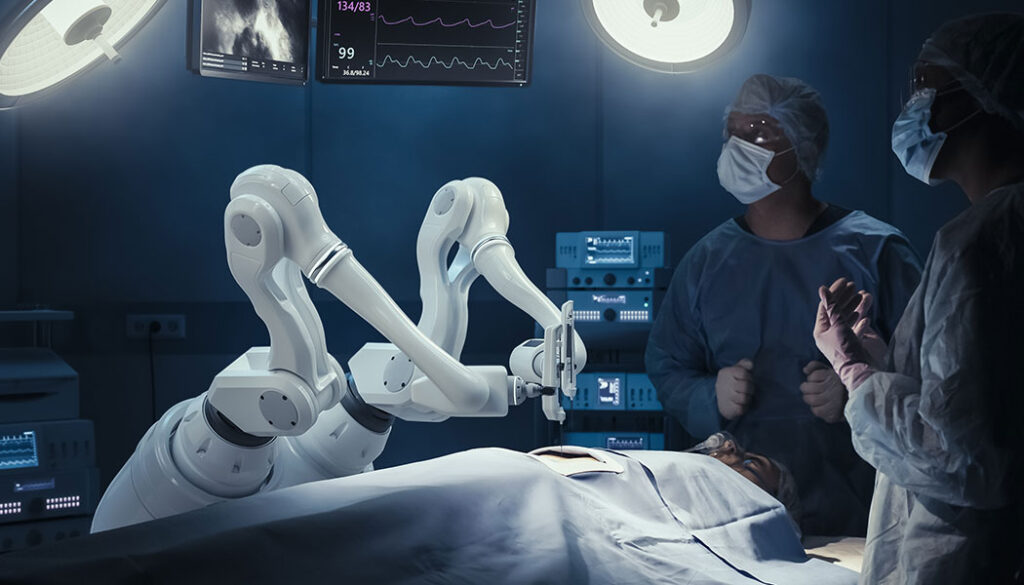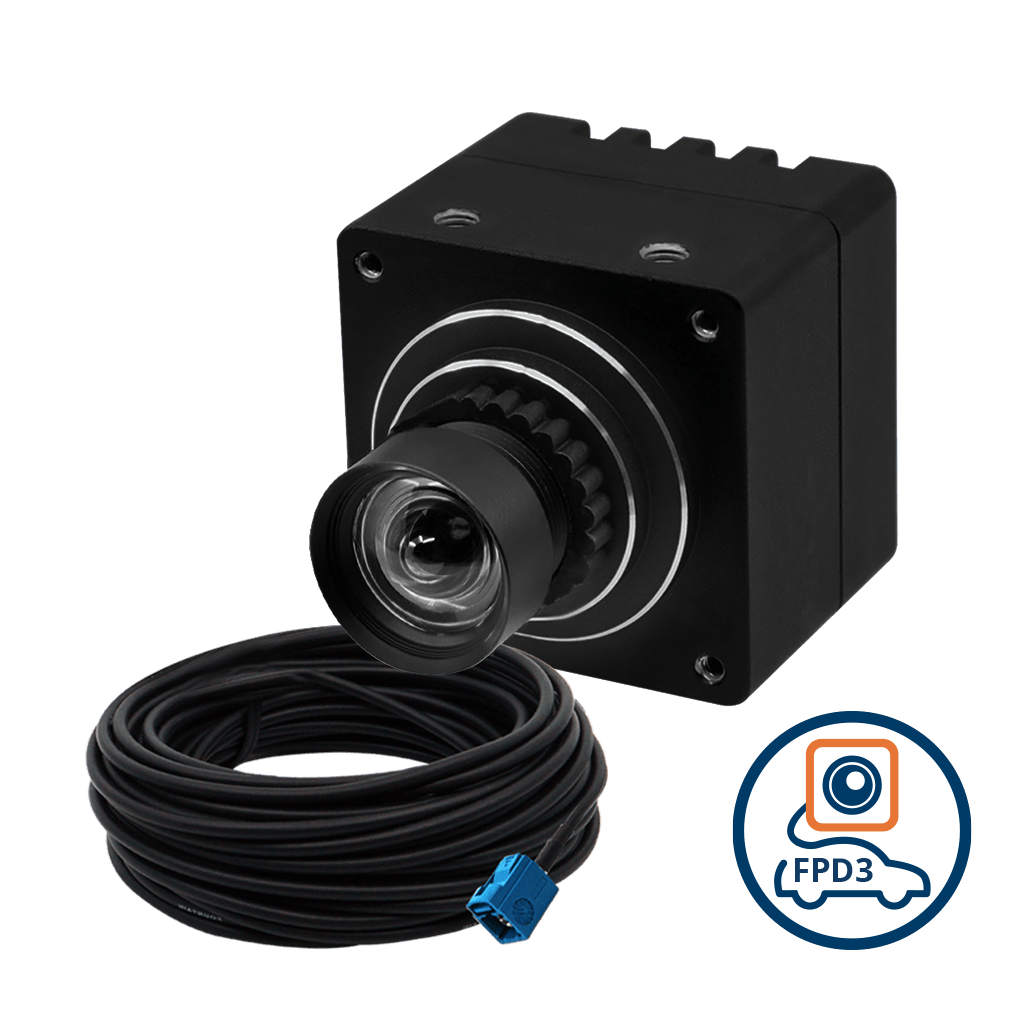Embedded vision has played a significant role in the technological developments in the medical industry over recent years. They have been integrated into pre-existing medical devices and help capture images needed for diagnostic and treatment procedures. Examples include equipment such as:
- Digital microscopes
- Retina scanners and fundus cameras
- Dermatoscopes
- Wound measurement devices
- Digital liquid handlers
- Rehabilitation equipment
Leveraging imaging systems in patient monitoring systems has helped improve the accuracy and speed of diagnosis, treatment, surgeries, and post-operative care. Manual and tedious tasks can be automated with the help of embedded cameras, resulting in significant cost savings and improved patient outcomes.
In this article, we discuss:
- What patient monitoring is.
- What patient monitoring cameras are.
- How embedded cameras redefine patient monitoring with the help of AI.
- Which key features of a camera module are used for patient monitoring.
- What the future of patient monitoring looks like.
What is patient monitoring?
Patient monitoring refers to any kind of monitoring activity done to assess the condition of a patient. Patient monitoring devices can be used for patients under treatment, or even healthy individuals to ensure all health parameters are in check. The pulse oximeter, which gained tremendous popularity during the COVID-19 pandemic, is a great example of a patient monitoring device.
Other examples include:
- Blood glucose meters
- Blood pressure apparatus
- Heart monitors
- Breathing (respiratory) monitors

Patient monitoring cameras and remote patient monitoring
Cameras play a role in the concept of remote patient monitoring. Remote patient monitoring is the process of continuously monitoring the status of a patient from a remote location without the staff having to be present in the patient’s room. This is most used for bedridden patients or those under observation.
Patient monitoring cameras act like a surveillance camera system where the camera is installed in the patient’s room on the roof – usually in a corner for maximum visibility. The camera captures video 24/7 and this feed is constantly monitored by medical staff or security personnel to ensure that the patient is safe and can be attended to immediately in case any care is required.
Embedded cameras form a key component of the patient monitoring system by continuously and reliably capturing video footage. The camera module used in the system is expected to capture clear and sharp videos during the day as well as at night, even under limited light supply.
How embedded cameras are redefining patient monitoring with the help of AI
While remote patient monitoring has been around for almost a decade now, the use of cameras is new. Even though embedded cameras have been in use in other applications for some times, why are they now being used for remote patient monitoring?
It is the integration of artificial intelligence.
Traditional remote patient monitoring cameras relied on human personnel. An attendant had to monitor the state of the patient continuously, resulting in a very high cost, and significant risk of missed adverse events such as strokes or falls. With the integration of artificial intelligence, monitoring can be nearly completely automated.
In a modern remote patient monitoring system enabled by AI, the function of the camera module remains the same. Its responsibility is capturing video footage of the patient without any interruption. The key difference is that the system has AI and ML algorithms built into it that come with the ability to automatically detect events like patient falls and movements. Analysis and interpretation happen instantly, and in case of any undesirable event, the medical staff concerned will be notified for immediate attention. The AI algorithm can also analyze the video data to derive insights such as sleep patterns, activity state, and movements.
In addition, the use of AI at the edge, or on the patient premises, can deliver results and increase patient privacy. Without analytics at the edge, the camera stream is continuously monitored by a human attendant. With AI, the analytics processing occurs on or near the camera itself, and an attendant is notified only when adverse events occur. The patient footage is therefore only transmitted during those events, significantly improving patient privacy.
Key features of a patient monitoring camera
The quality of the output delivered by the camera module is of utmost importance for AI-enabled remote patient monitoring systems. Here are the most important features a camera module used in a patient monitoring camera system:
- Resolution
- NIR sensitivity and low light performance
- Zoom
- High dynamic range
Resolution
The camera module delivers a high-quality video stream to the AI algorithm for real-time analysis. There is little margin for error, and resolution is very critical.
While it there is no ‘one-size-fits-all’ approach when it comes to selecting the resolution for remote patient monitoring cameras, resolutions between 5MP and 8MP are usually sufficient to provide the level of detail necessary for analysis, especially when using digital zoom.
Every use case is different, and we suggest working with a camera expert like TechNexion before you choose a resolution or image sensor.
NIR sensitivity and low light performance
Patient monitoring happens 24/7. A camera module must have low light sensitivity so that monitoring can occur during a patient’s sleep period. In ultra-low light conditions, the camera module will have to operate under an external IR (InfraRed) light.
Low light performance and NIR sensitivity are some of the most important features of a patient monitoring camera. For example, VLS-FPD3-AR0522-SL, an AR0522 NIR camera from TechNexion has been enhanced and optimized for superior IR and low light performance.
VLS-FPD3-AR0522-SL has a resolution of 5MP which is sufficient for most remote patient monitoring systems. It also comes with a convenient S-mount lens that is interchangeable with the lens of your choice. In addition, it is plug-and-play and can directly be integrated with Linux and Yocto.

FPD-Link III Aluminium Enclosed Camera with onsemi AR0522 5MP Rolling Shutter with Onboard ISP + S-mount Lens with IR-Cut Filter
VLS-FPD3-AR0522-SL
- onsemi AR0522 5MP Rolling Shutter Sensor
- Near Infra-Red Enhancement for Outdoor Applications
- Designed for Low Light Applications
- Convenient S-Mount (M12) interchangeable lens
- FAKRA Z-Code Automotive Connector
- Plug & Play with Linux OS & Yocto
- VizionViewer™ configuration utility
- VizionSDK for custom development
| Sensor | onsemi AR0522 |
| Shutter | Rolling |
| Megapixels | 5MP |
| Chromaticity | Color, Monochrome |
| Interface | FPD-Link III |
Zoom
For minute examination or getting a clear view of the patient, the camera must have the ability to zoom in on different areas of interest. While optical zoom type may be recommended over digital zoom for better clarity, it is centered on the optical center of the field of view. On the other hand, digital zoom allows an entire field of view to be analyzed and is a far less expensive system.
Also read: Optical Zoom vs. Digital Zoom in Embedded Vision Cameras
High dynamic range
Just as patient monitoring cameras operate in low light, they also must work under bright lighting conditions during the day. Depending on the lighting environment in the room, the camera view of the patient could be obstructed by bright light. In such cases, an ordinary embedded camera will deliver overly bright or washed-out images. To prevent this, a high dynamic range camera is recommended.
High dynamic range refers to the ability of a camera to capture images under wider intensities of light. A dynamic range of more than 100 dB is considered a high dynamic range or wide dynamic range. A suitable dynamic range should be chosen depending on the light intensity in the room.
Related: HDR Cameras and Their Applications in Embedded Vision

The future of remote patient monitoring cameras
Cameras are improving every day in terms of image quality, AI and computer vision algorithms are also making huge strides in terms of their ability to accurately detect and interpret patient behavior and movements. As technology improves in the coming years, we will see widespread adoption of remote patient monitoring.
To improve the accuracy of AI algorithms in detecting falls and other undesirable irregular events, there will potentially be more camera modules integrated into each individual patient monitoring system to allow video capture of different perspectives.
TechNexion – camera modules for modern medical applications
TechNexion’s focused efforts in research and development have helped us design cameras that meet the ever-evolving needs of next-generation embedded vision devices including medical equipment. Our portfolio includes cameras that come with excellent low light sensitivity and NIR performance, making them suitable for remote patient monitoring systems. Learn more about our embedded vision solutions here.
Related Products
- What is patient monitoring?
- Patient monitoring cameras and remote patient monitoring
- How embedded cameras are redefining patient monitoring with the help of AI
- Key features of a patient monitoring camera
- The future of remote patient monitoring cameras
- TechNexion â camera modules for modern medical applications
- Related Products
Get a Quote
Fill out the details below and one of our representatives will contact you shortly.



